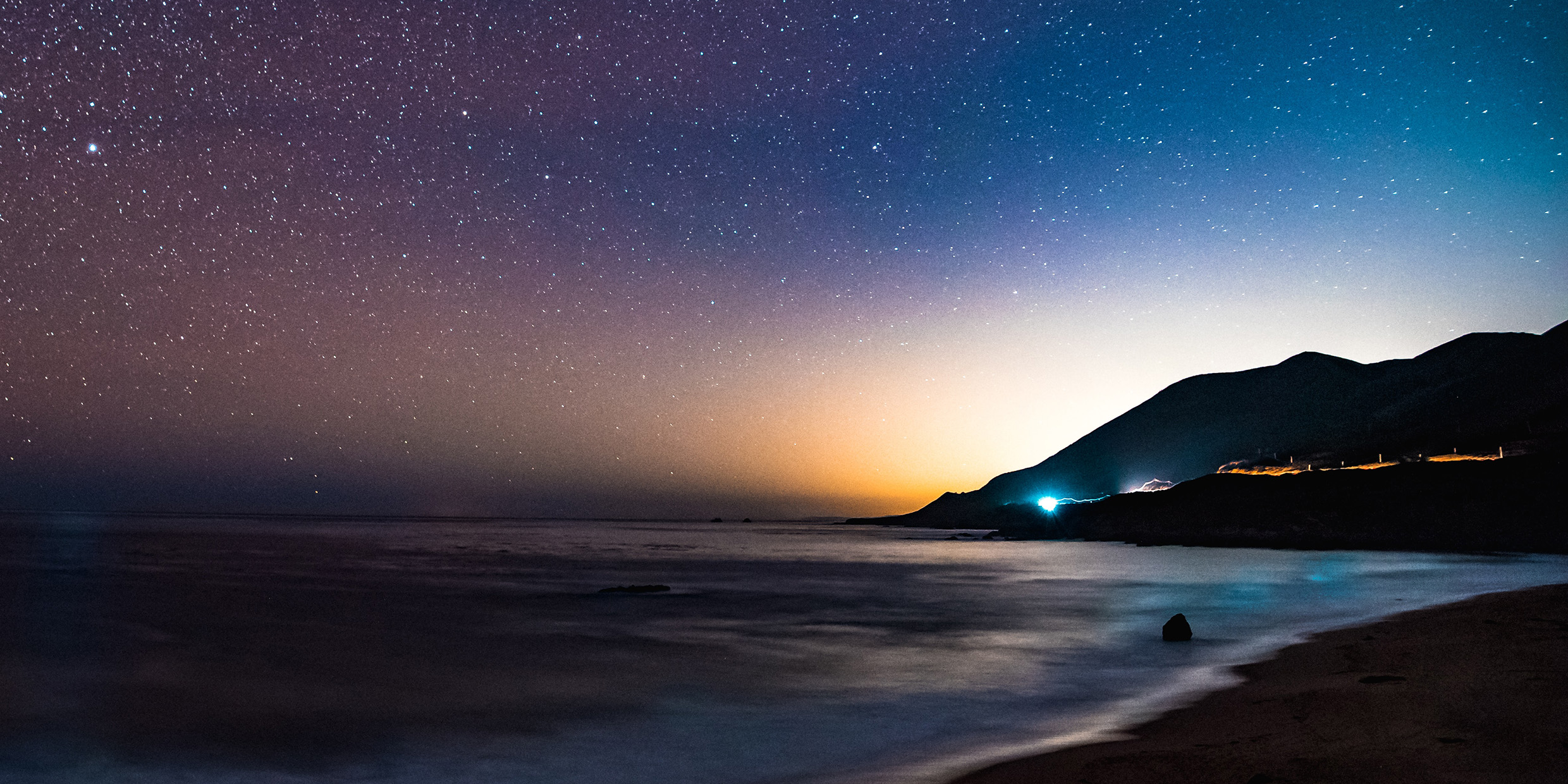Originally published 18 July 1994
Sometimes it’s fun to think about things that no one has thought about before.
Some things are thought about for the first time because they require a measure of genius. For example: Darwin thinking about evolution by natural selection, Einstein thinking about relativity, or Watson and Crick thinking about the DNA double helix. Being the first to think about these sorts of things can win you a Nobel prize.
Other things are thought about for the first time because they are so utterly commonplace that no one has bothered to think about them. These are the kind of things I like to think about.
If I’ve learned anything in my fifty-odd years of thinking about commonplace things, it is that the commonplace can be miraculous.
When you think about it, I mean.
Consider starlight.
I was looking at Arcturus the other night. Arcturus is 36 light-years away. That’s 216 trillion miles. And I saw it.
It’s not like a special ray of light came from Arcturus to my eyes. That’s what we often imagine. We’ve seen so many pictures of Stars of Bethlehem and Twinkle Twinkle Little Stars with beams of light shooting straight down to Earth that it’s easy to believe that starlight is somehow directed towards us. But, of course, when we think about it, we realize that this is not so.
The light from a star goes out in every direction, like a constantly expanding balloon of energy, getting weaker all the time. Only the tiniest fraction of a star’s light falls upon the Earth.
How much? Let’s do the calculation. Don’t be put off by the numbers; just wait for the bottom line.
At a distance of 216 trillion miles, the light of Arcturus is spread out over a sphere with an area of 586,000,000,000,000,000,000,000,000,000 square miles. The Earth has a cross-sectional area of about 50 million square miles. So the fraction of Arcturus’ light that falls upon the Earth is about 1 part out of 10 sextillions. That’s 1 followed by 22 zeros.
Of the starlight that falls on Earth, an even tinier fraction enters the pupil of my eye to form an image of the star. Another calculation: How does the area of my pupil compare to the cross- sectional area of the Earth? I’ll spare you the details. Click, click, click on the calculator. Another factor of 10,000,000,000,000,000,000, more or less.
So the fraction of Arcturus’ light that enters my eye is one part out of 100,000,000,000,000,000,000,000,000,000,000,000,000,000.
Getting bored? Stick with me.
Let’s see if I can give you a sense of what this number means. The oceans of the Earth contain about 320 million cubic miles of water. If you dipped the point of a pencil into the ocean, the amount of water you’d come up with, compared to all the waters of the oceans, is more than the fraction of Arcturus’ light that enters my eye.
You see what I mean. There’s nothing terribly profound about these calculations. A little high-school science and a calculator is all it takes. So why think about it at all?
If I’ve learned anything in my fifty-odd years of thinking about commonplace things, it is that the commonplace can be miraculous.
Well, think about it. All those expanding spheres of light from thousands of stars (the ones that are bright enough to see), mushing about through space, falling upon the pupils of our eyes, many of them from only slightly different directions, and out of a damp pencil-tip’s worth of light our brains form an image of Arcturus. And Rigel. And Betelgeuse. And…
And that’s just the brighter stars. If we consider the most distant star we can see with the naked eye, which would be roughly 10,000 light-years away, then we get another factor of…
Stop! This has gone on long enough. We’re overdosing on numbers. Let the poets, artists, and musicians have a go at describing the stars.
Shakespeare’s “night’s candles.”
Hopkins’ “fire folk sitting in the air,” or, better, his “dim woods quick with diamond wells; the elf eyes.”
Or Van Gogh’s “Starry Night Over the Rhône,” those fiery vortices, those furious whirlpools of light.
Or Haydn’s “Creation,” probably inspired by a view of the stars through astronomer William Herschel’s telescope in 1792, the orchestra ascending a luminous crescendo of sound, “the space immense of th’ azure sky, a countless host of radiant orbs adorn.”
Balloons of starlight inflating across tens of trillions of miles to be sampled by our eyes. Damp pencil-tips of energy, but enough to excite the retina, signal the brain, open our minds to the universe, inspire, frighten, elevate, surprise.
Utterly commonplace. But when you think about it — miraculous.



